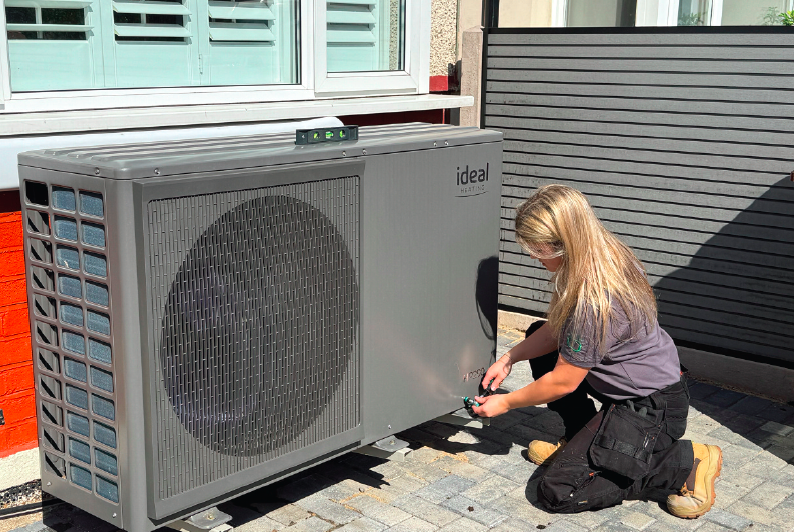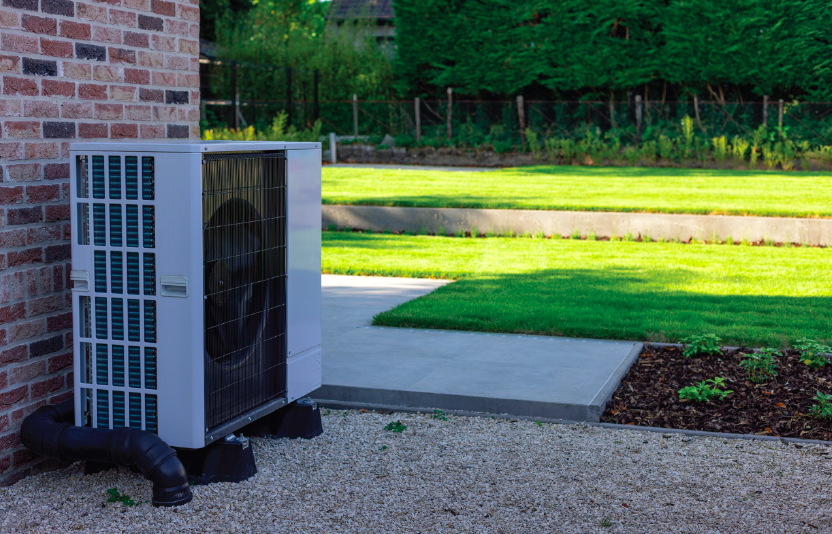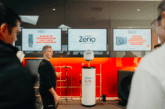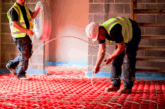
Jez Climas, Head of Business Development – Renewables at City. Plumbing, explains why the electrification of heat requires a new approach to designing and procuring heating systems, with a focus on the whole house.
For decades, gas boilers have been the standard choice for new-build homes. Over that time, the industry has refined every step of procurement, installation and maintenance. The result is a system that is familiar, predictable and reliable, with processes that work smoothly across the supply chain.
Heat pumps are now stepping into that role as part of the shift to low-carbon heating. The technology is proven and effective, but the supporting processes are not yet as established as those for boilers.
That makes outcomes more dependent on design and integration. For housebuilders, this is an opportunity to think differently about how heating, hot water and renewables are specified and delivered.
The importance of integration
Boilers became straightforward because the industry has had decades to optimise them. Merchants, manufacturers, subcontractors and installers all know precisely what is required, and each part of the job is handled in isolation with confidence that the system will still function properly.
Heat pumps will eventually follow a similar path, but they benefit significantly from a more integrated approach. Capacity, where it’s situated, pipework, cylinder location, emitters, controls and flow temperature all interact to determine efficiency, capital and operating costs, and comfort. If these choices are made in isolation, the home will still function, but not always as efficiently or cost-effectively as it could.
Some of the most common issues in new-build heat pump installations are not about the technology itself, but about decisions made during design and procurement.
One example is capacity. Too often, homes are fitted with oversized heat pumps because a full heat loss calculation hasn’t been carried out. This seemingly safe assumption raises both upfront cost and running cost, while also increasing noise. Proper room-by-room modelling avoids this, ensuring the smallest suitable unit is chosen, reducing capital outlay and delivering lower bills.
Siting is another area where value can be lost. Outdoor units are sometimes placed in awkward locations or mounted on elaborate bases that add capex expense without benefit. Inside the home, cylinders are often placed upstairs or centrally, forcing long pipe runs across multiple floors. Again, this adds further upfront cost. Early planning could avoid this by using ground-floor or under-stairs locations that are more practical and cost-effective.
Controls and system design are another consideration. Because heating and hot water packages are often procured separately, manufacturers sometimes add buffers to make their part of the system perform in isolation. While this protects their package, it incurs additional capital costs and increases operating expenses by reducing the overall system’s efficiency. A whole-house design can remove that need, simplifying the installation and improving performance.
Flow temperature is another detail that can be overlooked, but one that can make a big difference. Many systems are designed around 45°C as standard, but reducing the specification to 40°C can increase operating efficiency by around a quarter, with no discernible impact on radiator sizing or capital investment. That gain is only possible when the system is considered as a whole, rather than treated as separate components.
The importance of integration goes further than heating alone. With the Future Homes Standard set to mandate solar PV on most new homes and battery storage increasingly part of that picture, housebuilders and their buyers can benefit from taking a whole-house approach.
When these technologies are designed together, their combined value grows. A battery can store self-generated electricity to meet heating demand later in the day or solar PV can directly support the heat pump during daylight hours. Likewise, by creating a system that works together, the homeowner can manage everything from a single app or control centre for improved usability.
For housebuilders, this whole-house approach also streamlines procurement. Instead of asking suppliers to price long lists of products, developers can set clear outcomes – whether that is minimising upfront cost, improving efficiency or enhancing buyer experience – and work with partners to achieve that objective.
An integrated supplier
Boilers became simple to procure and install because the industry refined every detail over time. Heat pumps and integrated energy systems will follow the same trajectory, but housebuilders don’t need to wait for that maturity to evolve naturally.
Working with partners who bring together expertise in heating, plumbing and renewables, supported by national infrastructure and local delivery, allows housebuilders to shorten the learning curve and accelerate their low-carbon journey.
Leading merchants are also creating integrated new build design services to help housebuilders access technical knowledge, cohesive design support and reliable supply, avoiding many of the trialand- error pitfalls that slow progress.
In addition to accelerating the journey, using services like these also creates market differentiation. As buyers become more aware of running costs, sustainability and smart home technology, developers who can demonstrate that their homes are designed as integrated energy systems, rather than piecemeal installations, will stand out. That differentiation is not only about compliance with regulations like the Future Homes Standard, but also about building confidence with customers, positioning homes as more desirable and future-ready, and strengthening your reputation in a competitive market.
For more information on City Plumbing go to www.rdr.link/dbg028









